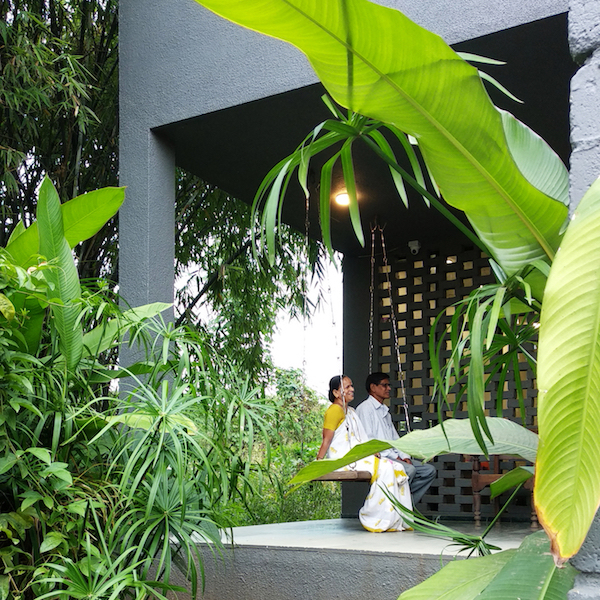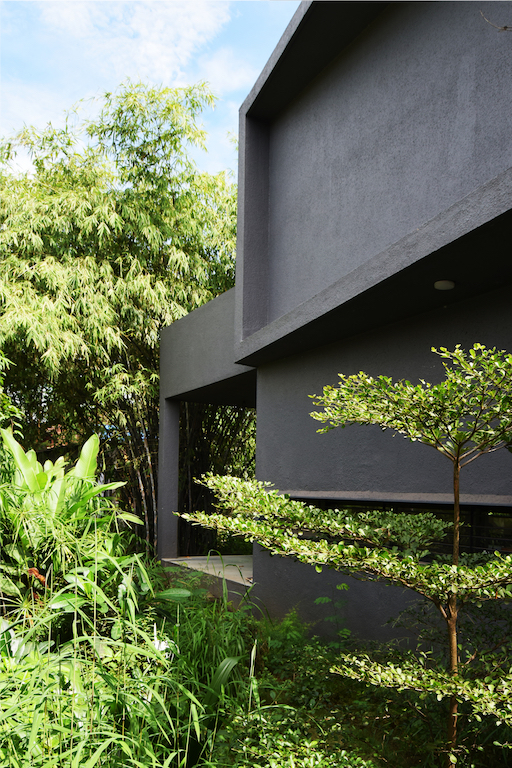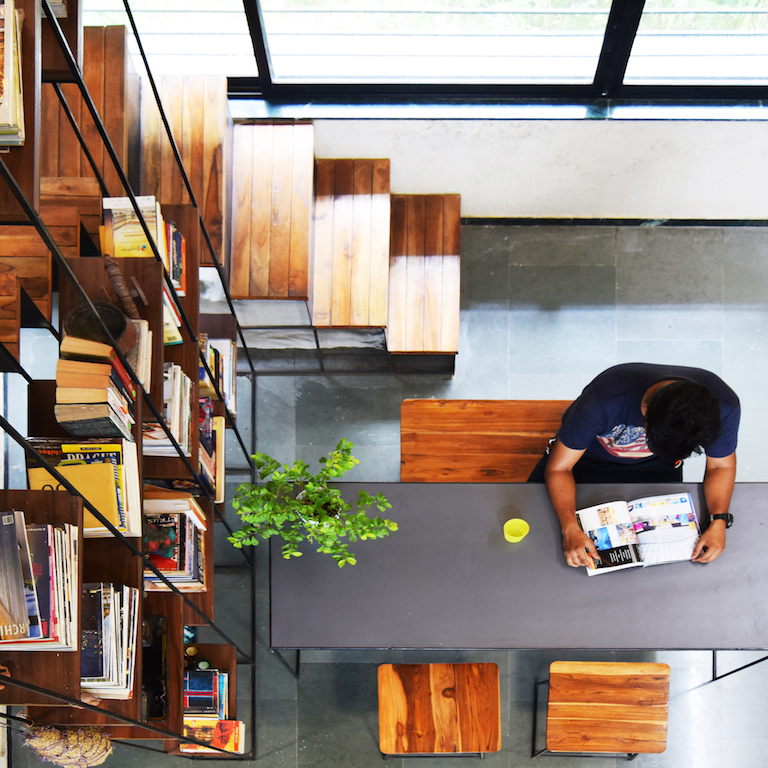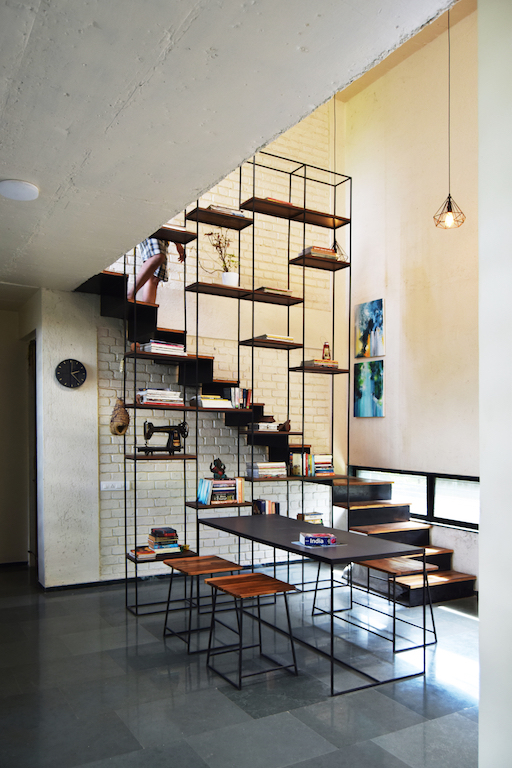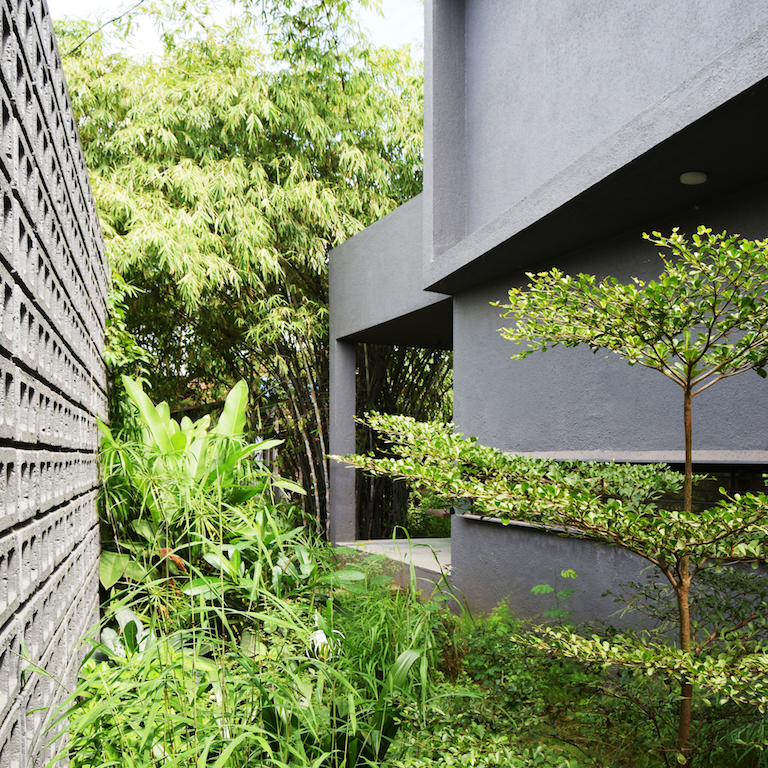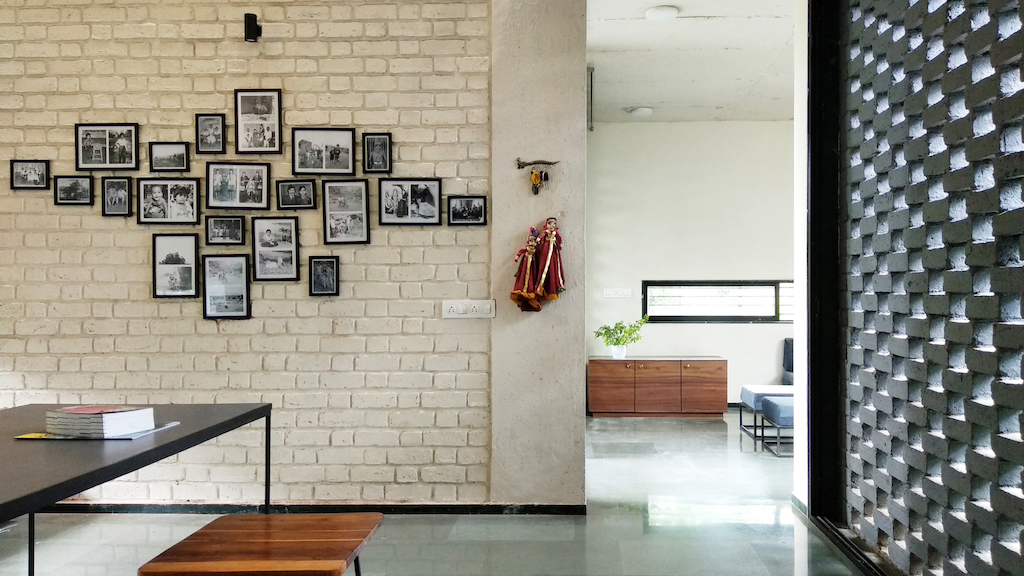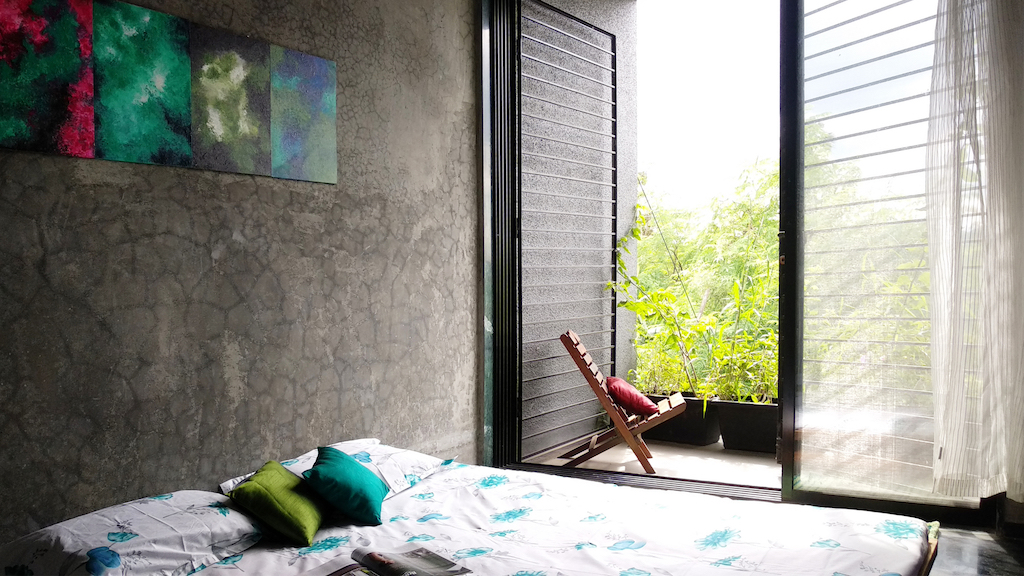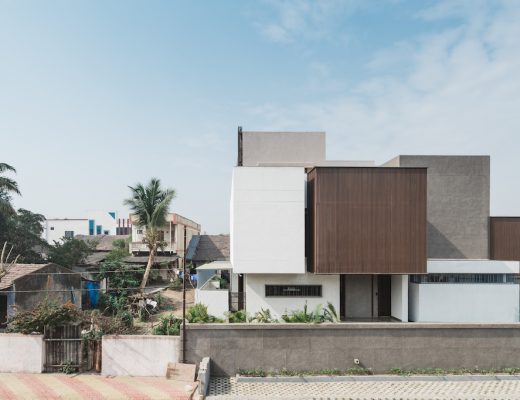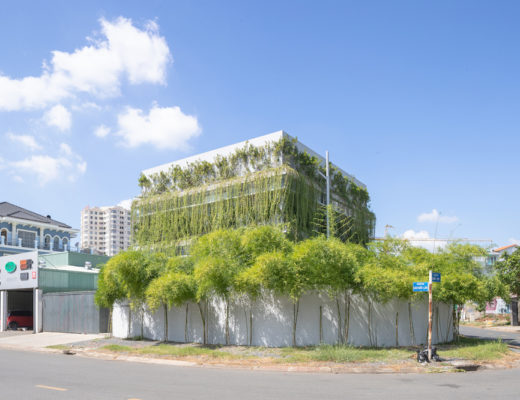Located within the lush surroundings of a small village called Dakivali in India’s western state of Maharashtra, this house designed by unTAG Architecture and Interiors reflects the aspirations of a paddy farmer, and a retired school teacher, who wanted to build a modest and cost-effective home within his Gaothan (which means the inner core of a village in Hindi). The design of the house aims to merge affordable and sustainable modern comforts with rural bucolic charm.
Sited on a tight 465m² plot abutting the dusty unpaved village road, it was once a wasteland, with a small bamboo grove on it. Flanked on two sides by traditional village homes of a closely knit farming community, the house had to strike a balance between being participatory as well as distinctive.
Having spent a major part of his life toiling in the paddy fields, the owner wanted his dream home to have a connection with nature alongside a sense of affordable comfort. With a modest budget of USD 40,000 given to the architects, the challenge lay in exploring an efficient living for a retired farmer while retaining the essence of countryside life.
The design team drew up a strategy to weave in the house with a built-up area of 130m² through a traditional unpretentious central courtyard, locally known as aangan, circumscribing the primary functions together around it. Anchoring the living spaces, the courtyard features a young champaka tree, and creates a cool microclimate, lowering the ambient temperature by 3- to 5-degree celsius. It acts as a safe green haven, establishing a direct connection with the elements, which the client always desired for.
This inward-looking house, maintains the privacy of its residents, and also has an extroverted road-facing entrance veranda on the west, serving as the vital visual connect with the traversing villagers. Strategically located westwards, next to the existing bamboo grove, one can witness a breezy sunset scene behind the distant Sahyadri hills, while seated on a traditional swing. An integral element of most tropical homes in India, the veranda acts as a threshold, a transitory space between the village’s public realm and a reclusive indoor living.
The larger yet controlled openings, establish a connection with the immediate landscape, make the compact indoor spaces feel spacious, bringing in precise amount of light, as well as facilitating cross-ventilation. Costs are drastically reduced by optimising the floor plate, by proposing multi-functional spaces, like the double-height dining-cum-prayer space, which also serves as a library, integrated with a metal staircase to access the upper floor.
Dust and privacy being a major concern, the house is entered through a landscaped entrance courtyard, enclosed by low-cost locally sourced concrete fly-ash blocks, and mesh screen acting as buffer to screen off the dust, and cut-off direct visibility from the village road. The mesh screen also serves as a climate control measure by breaking off the harsh east and west sunlight, while also letting the breeze flow through it.
The orientation of this courtyard house with respect to wall surfaces, openings and projections have been conceived through passive solar strategies to achieve optimum thermal comfort for the inhabitants. The terraces have been painted white, to reduce incident heat gain. With a low embodied energy material palette of bricks procured from nearby kilns, locally manufactured concrete fly-ash blocks, plastered walls and the indigenous limestone floor, this rural home fosters economic and ecological sustainability.
Recharge pits have been introduced at key locations on-site, to channel the rainwater run-off into ground. Wastewater has been treated through phytoremediation and subsequently used for landscaping the surroundings. The cost-effective productive architecture alongside the green initiatives in landscaping is establishing new standards for an affordable sustainable living within the nearby farming communities.
Photos: unTAG Architecture & Interiors



